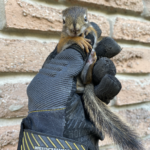The majority of people believe that trapping and relocating wildlife is a good solution to the problem of “nuisance wildlife.” They think that if the offending animal is trapped and relocated and the number of animals in the area is reduced, the problem will go away. However, this is not the case.
When an animal is removed from an area, it creates a vacancy that other animals in the area can take advantage of by moving in and accessing the existing food and shelter. This means that there is no overall reduction in the number of animals in the long run, and trapping and relocation is ineffective and a waste of money.
Despite this, some operators are capitalizing on people’s belief in trapping and relocating as a solution, causing a resurgence in the use of this inhumane practice.
Why are we ignoring the arguments against trapping and relocating wildlife, which have been shown to be inhumane, not scientifically sound, and not a long-term solution?
- Trapping creates orphans by separating a mother animal from her dependent offspring.
- Wildlife will do anything to escape from a trap, often causing serious self-injury or death.
- Relocating wildlife away from their known food sources and shelter causes stress and starvation.
- Studies have shown that trapped animals can die of stress-related causes even days after being released.
- Releasing an animal into the territory of another animal can result in territorial fights over food and shelter.
- Transferring a sick animal into a population of healthy animals spreads infectious diseases.
- Exposure to adverse weather conditions and inadequate monitoring of traps while animals are confined can kill the animal.
We urge you to speak out against the inhumane use of traps as a means of wildlife control.









